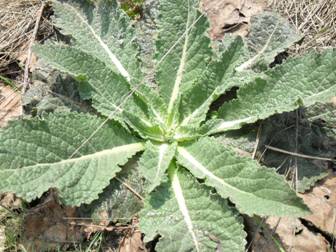
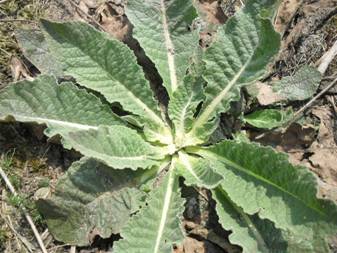
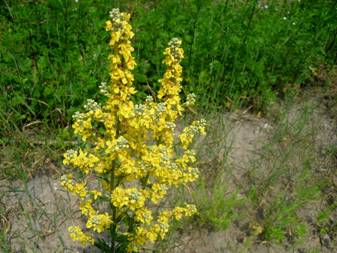

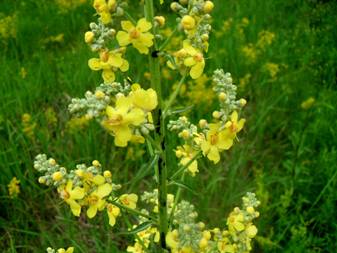
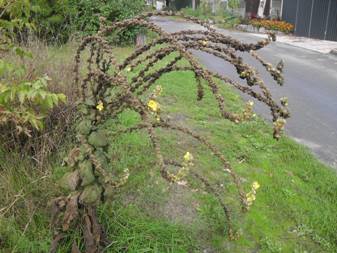
Mullein, velvet plant (Verbascum), fam. Scrophulariaceae.
In winter and early spring time it looks like a rosette of leaves, that some people call "bear's ears". While this folk name represents the soft velvety texture of the leaves, it is better not to use it, to avoid confusion with Bearberry (Artostaphylos uva-ursi) from the Ericaceae family. The latter does not grow around Kyiv, and has nothing common with mullein, being closer to bilberry.
By the way, where does the Russian name of the plant come from? Is it a favorite feed of the cows? Nothing like that – the cattle rather avoids this plant, obviously due to bitter taste. On the other hand – if they avoid it, then it may soon become predominant in the field where cows graze regularly. There are other versions – for example, that the mullein's leaves not only remind bear's ears, but cow's as well. Finally, the dry last-year leaves can look similar to cow's manure.
There are lots of mullein species in Ukraine, which are difficult to distinguish. In the DVRZ vicinity, most probably, the white mullein (Verbascum lychnitis) is most common. Its inflorescences are very branchy pyramidal panicles, with relatively small flowers.
In other regions of Ukraine, especially in the south, mullein is more abundant, and its species are different. Among them are possible, particularly: phlomoides (orange mullein), ovalifolium (oval-leaf), densiflorum (dense-flower or scepter-like), thapsus (common or great mullein).
Mullein has antiinflammatory, wound-healing, expectorant, diuretic properties. Its most valuable is the flowers, while the leaves and the seeds are used as well. Depending on the species (which are quite numerous, as noted above), the active substance content and dosage should differ. So, probably, it is better to trust the pharmacy preparations or the knowing people, than to risk on one's own with poorly known species of mullein.
The plant has high ornamental properties, and often it is the greatest decoration of the summer steppe landscapes. One of its folk names is "king's candles". So why it is not grown purposefully? Only once there has been noted a mullein cultivar in DVRZ, with white flowers (see photos below). Unlike its wild relatives, it bloomed quite early, in May. Most probably, this sort belongs to the species Verbascum spectabile or phoeniceum (purple, the "flush of white" variety). Both species are not usually white in nature, so this confirms that a special hybrid was planted.